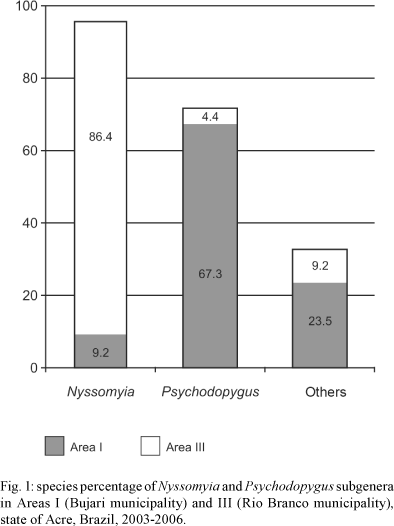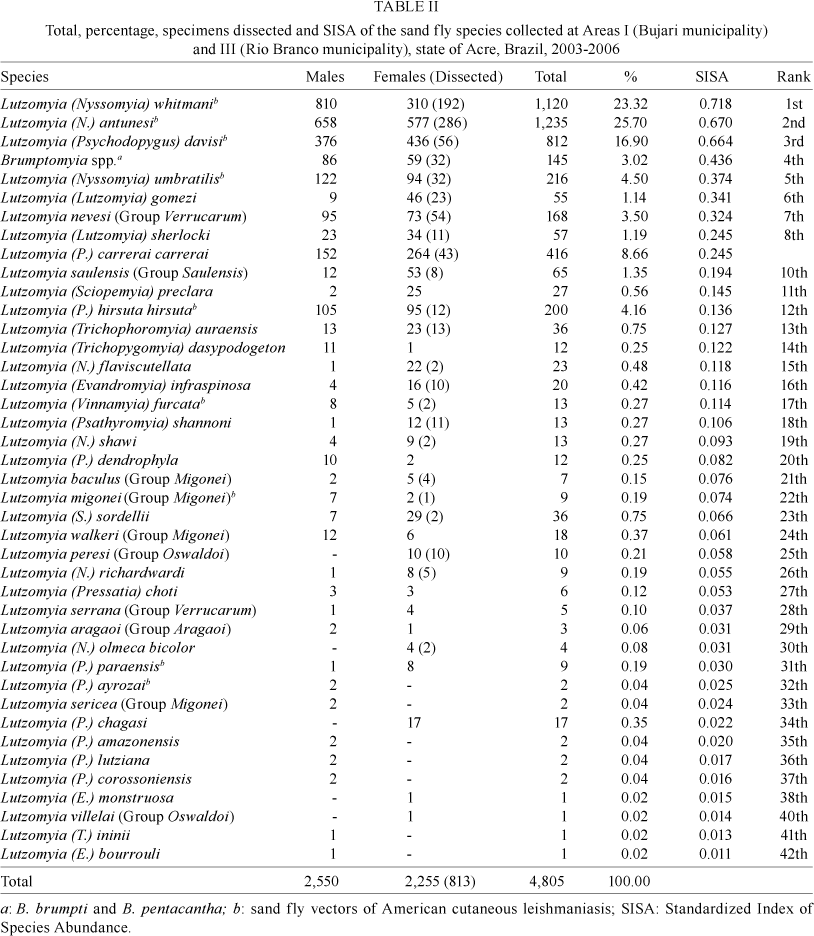Studies were undertaken on the phlebotomines in the municipalities of Bujari, Xapuri and Rio Branco in the state of Acre. The abundance of species on the ground and in the tree canopy was estimated by Standardized Index of Species Abundance. Of the 52 species identified, Lutzomyia (N.) antunesi, Lutzomyia (N.) whitmani, Lutzomyia (P.) davisi, Lutzomyia migonei, Lutzomyia (N.) umbratilis, Lutzomyia (N.) flaviscutellata, Lutzomyia (T.) ubiqui-talis, Lutzomyia (P.) hirsuta hirsuta, Lutzomyia (P.) paraensis and Lutzomyia (P.) ayrozai are known to be vectors of Leishmania, the causative agent of American cutaneous leishmaniasis. Lutzomyia (T.) auraensis, Lu. (N.) antunesi, Lu. (N.) whitmani and Lu. (P.) davisi accounted for 66.95% of the specimens collected. Lu. (N.) whitmani was the most abundant species, followed by Lu. (N.) antunesi and Lu. (P.) davisi. Lu. (N.) antunesi was the most abundant species in the soil as well as in the canopy. Lu. (N.) umbratilis occurred in all three municipalities and was the fifth most abundant species in the Chico Mendes Municipal Park in Rio Branco. It was collected on both the ground level as well as in the canopy; however, it was more frequently collected in the tree canopy. The present study suggests the existence of three transmission cycles of Leishmania in Acre, including the transmission of Leishmania (V.) guyanensis by Lu. (N.) umbratilis south of the Amazon River.
Phlebotomine fauna; Lutzomyia; vector ecology; American Cutaneous Leishmaniasis; state of Acre; Brazil








